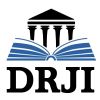Use of the disaster deficit index in the evaluation of the fiscal impact of future earthquakes
Abstract
The Disaster Deficit Index (DDI) measures disaster country risk from a macroeconomic and financial perspective, according to possible future catastrophic events. The DDI captures the relationship between the demand for contingent resources to cover the maximum probable losses and the public sector’s economic resilience; that is, the availability of internal and external funds for restoring affected inventories. For calculating potential losses, the model follows the insurance industry in establishing a probable loss, based on the critical
impacts during a given period of exposure, and for the economic resilience the model computes the country’s financial ability to cope with the situation taking into account: the insurance and reinsurance payments; the reserve funds for disasters; the funds that may be received as aid and donations; the possible value of new taxes; the margin for budgetary reallocations; the feasible value of external credit; and the internal credit the country may obtain. Access to these resources has limitations and costs that must be taken into account as feasible values according to the macroeconomic and financial conditions. This paper presents  the model ofDDI and the results for fourteen countries of the Americas to design appropriate
risk evaluation tools to guide the governmental decision making.
Full Text:
PDFReferences
Albala-Bertrand, J.M. (1993) “Natural Disaster Situations and Growth: A Macroeconomic Model for Sudden Disasters Impactsâ€, World Development 21:9, 1417-1434.
Albala-Bertrand, J.M (2002) Urban Disasters and Globalization, in The Future of Disaster Risk: Building Safer Cities. Conference organized by the ProVention Consortium. DMF, World Bank. Available at: http://www.proventionconsortium.org/conferences/washington_agenda.htm
ASTM (1999) Standard Guide for the Estimation of Building Damageability in Earthquakes, E 2026-99.
ATC (1985) Earthquake Damage Evaluation Data for California, ATC-13 (FEMA), Applied Technology Council, Redwood City, CA.
Benson, C. (2003) The Economy-wide Impact of Natural Disasters in Developing Countries, London University.
Cardona, O.D. (2005) Indicators of Disaster Risk and Risk Management: Program for Latin America and the Caribbean, Summary Report, IDB/IDEA Program of Indicators for Disaster Risk
Management, National University of Colombia, Manizales. Available at: http://idea.unalmzl.edu.co
Carreño, M.L, Cardona, O.D., Barbat, A.H. (2005) Sistema de indicadores para la evaluación de riesgos, MonografÃa CIMNE IS-52, Universidad Politécnica de Cataluña, Barcelona.
Carreño, M.L, Cardona, O.D., Barbat, A.H. (2007a) A disaster risk management performance index, Journal of Natural Hazards, 41:1, 1-20, The Netherlands: Springer.
Carreño, M.L, Cardona, O.D., Barbat, A.H. (2007b) Urban Seismic Risk Evaluation: A Holistic Approach, Journal of Natural Hazards 40:1, 137-172, The Netherlands: Springer.
Coburn, A. & Spence, R. (1992) Earthquake Protection (John Wiley & Sons Ltd, Chichester, UK.)
ECLAC (2003) Manual para la estimación de los efectos socio-económicos y ambientales de los desastres. Economic Commission for Latin American and the Caribbean and World Bank, four volumes, Washington.
EERI (1997) Earthquake Spectra, Theme issue: Loss Estimation, 13:4, Oakland.
Esteva, L. (1970) Regionalización sÃsmica de México para fines de ingenierÃa, Serie Azul 246, Instituto de IngenierÃa, UNAM, México.
FEMA (1999) Earthquake Loss Estimation Methodology, HAZUS, National Institute of Building Science for Federal Emergency Management Agency, Washington.
Freeman, P.K., Martin, L.A., Mechler, R., & Warner, K. (2002a) “Catastrophes and Development: Integrating Natural Catastrophes into Development Planningâ€, Disaster Risk Management Working Paper Series No. 4. World Bank, Washington.
Freeman, P.K., Martin, L.A., Linneroot-Bayer, J., Mechler, R., Pflug G. & Warner, K. (2002b) Disaster Risk Management: National Systems for the Comprehensive Management of Disaster Financial Strategies for Natural Disaster Reconstruction, SDD/IRPD, Regional Policy Dialogue, Inter-American Development Bank, IDB, Washington.
IDEA (2005) System of Indicators for Disaster Risk Management: Program for Latin American and the Caribbean, Main Technical Report, IDB/IDEA Program of Indicators for Disaster Risk Management, National University of Colombia, Manizales. Available at: http://idea.unalmzl.edu.co
Ordaz, M. & Santa-Cruz, S. (2003) Computation of physical damage to property due to natural hazard events, IDB/IDEA Program of Indicators for Risk Management, National University of Colombia, Manizales. Available at: http://idea.unalmzl.edu.co
UNDP (2004) International Patterns of Risk, the Disaster Risk Index, DRI Reducing, in Disaster Risk: A Challenge for Development. A Global Report, Geneva. Available at: http://www.undp.org/bcpr/disred/rdr.htm
World Bank (2004) Identification of global natural disaster risk hotspots, Center for Hazard and Risk Research at University of Columbia, Washington.
Refbacks
- There are currently no refbacks.
Copyright (c) 2016 INTERSECTII / INTERSECTIONS
Indexed

